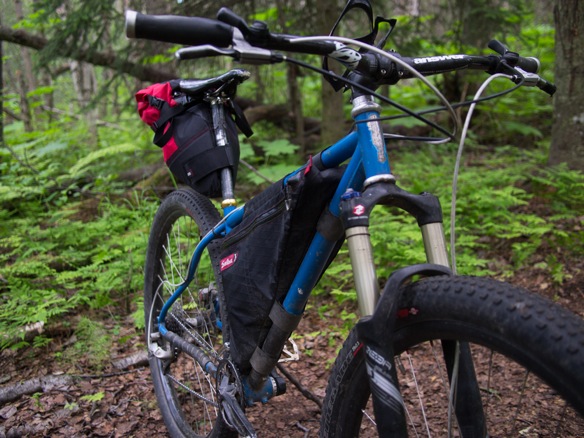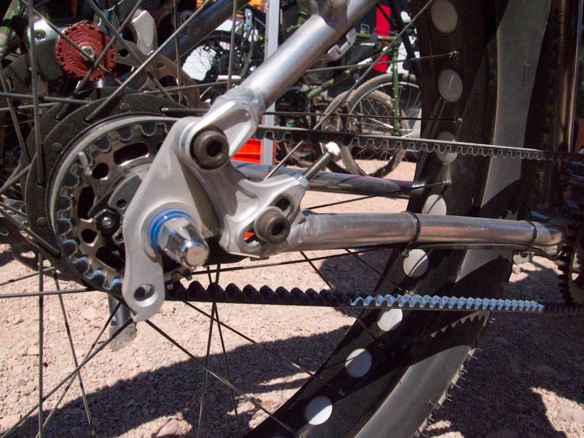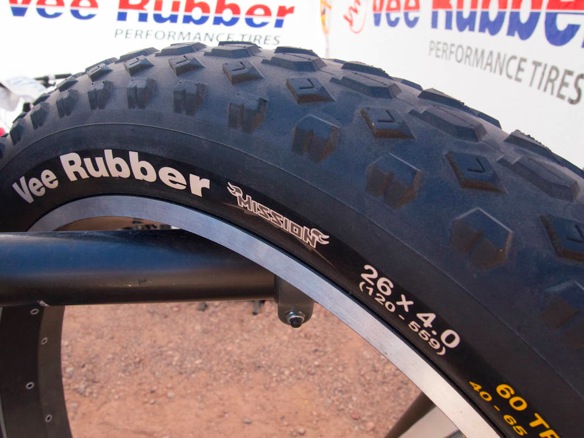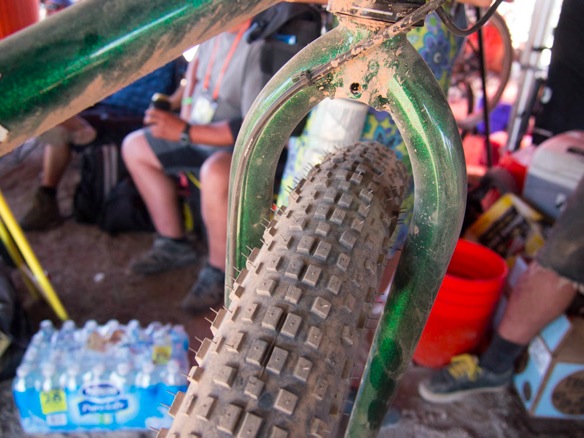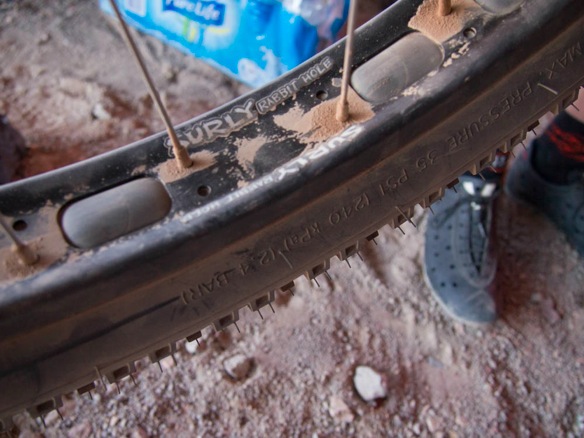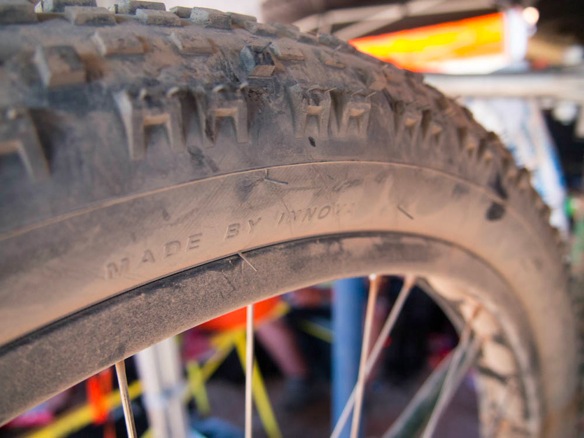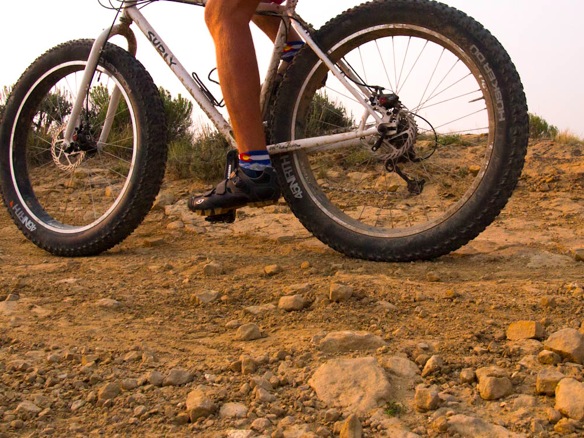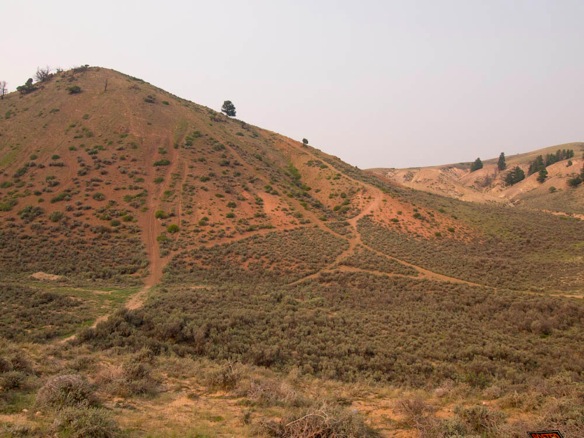
As Jeremy would say, “you’ll take the bike you’re riding the day before you leave”. A friend from our time in New Mexico, Jeremy has gained the wisdom of an old man from years in railcars, on the road, and on a bicycle. He’s barely thirty years old, but he’s right.
This spring, I’ve enjoyed a greater period of bike building and planning than ever before. My Raleigh XXIX was purchased used in Santa Fe less than a week before leaving for Amsterdam last summer. My Surly Pugsley was fit with a variety of wheel, tire, and handlebar combinations in the days leading to my departure from Anchorage in 2012. In 2011, I developed my first Carradice-based rack-lite touring system for my Schwinn High Sierra in the final week before departure from Annapolis, MD. In late 2009, I built our first dynamo wheels and lighting systems the week before leaving Tacoma, WA to ride south to Mexico for the winter. Back in 2008, I had built my dream bike from a vintage Miyata One Thousand frame. The frame broke with a few weeks to go and I swapped parts to a mid-nineties Trek 520. I remember the first ride with empty Ortlieb panniers attached to touring-grade Jandd racks. It was awkward and exciting. I now think that riding a bike with racks and panniers is awkward, but not exciting. All of these bikes are documented on my webpage entitled “Touring Bikes”.
When the day comes, we’ll leave on whichever bikes we are riding.
Over the past month, I’ve experimented with wheels and tires on the Salsa Mukluk. A suspension fork and a trail-oriented parts ensemble including 45mm Velocity Dually rims graced my red fatbike, before opting for a purpose built machine. Enter the Surly Krampus, which makes all the improvements I was searching for last summer, without compromise. I really enjoyed the Raleigh last year, but often asked for a few more things, including greater tire clearance and longer fork travel. While the 29.1mm Stan’s FlowEX rims served me well, I also thought a slightly wider rim would be more appropriate for the 2.3-2.4″ tires I prefer. To do all of this without adding significant heft to the machine is the trick. Over the years, the goal has been to create a more capable bike, without gaining weight. Oh, and the rims must be genuinely tubeless ready.
Why not the Mukluk? Well, it works fine, but considering the amount of pedaling I expect to do before I need a fabike again, a standard width bottom bracket will be nice for my knees. I’d not had any issues riding a Pugsley for over a year in the past, but this winter, I gained a few creaks in my knees which I was unable to explain. In retrospect, I attribute my discomfort to excessive riding and challenging conditions (snow). Some more stretching may have helped. Mostly, my legs felt great once the snow melted, but I wasn’t going to take any chances.
In all, the Krampus and the Mukluk are more alike than they are different. The frame dimensions and angles are nearly identical, although on paper the Krampus features a slightly longer top tube. Thus, I moved into the Krampus frame knowing that it was almost exactly what I wanted. If you own a newer Mukluk, know that it also makes a capable 29er mountain bike.
As the day nears, these are the bikes we will ride, mostly. Lael seriously considered buying a full-suspension bike, as a nod towards our trail oriented aspirations. Instead– convincing herself she didn’t need that, not yet– we’ve made some improvements to her bike. Come late July, I will be leaving town on a completely new bike for the first time, ever.
Oh yeah, we’ve got plane tickets to Vienna on July 22nd. Vienna, like Amsterdam, seems like a fantastic place to begin a bikepacking trip. We hope to be gone for close to a year.

Fox Talas 32 factory fork (120mm-90mm adjustable travel)
Race Face Sixc 780mm carbon handlebar/ Specialized 75mm stem/ Cane Creek 40 headset/ Ergon GP-1 grips
Salsa Regulator titanium seatpost/ Brooks B17 saddle/ Surly seatpost clamp
Shimano Deore 38/26 cranks/ Shimano XTR 9sp GS-cage rear derailleur/ Shimano Alivio 11-34T cassette/ SRAM PC-951 chain/ SRAM X5 double front derailleur/ Problem Solvers FD clamp/ Redline Monster pedals
Paul Thumbies shifter mounts/ Shimano 9sp bar-end shifters
Avid BB7 brakes and rotors/ Avid FR-5 brake levers
SP 15mm thru-axle dynamo hub/ Light Bicycle 35mm tubeless carbon rim/ DT butted spokes and brass nipples/ Maxxis Ardent 29×2.4″ skinwall tires/ Stan’s tape and sealant
SRAM X7 rear hub/ Stan’s FlowEX rim/ DT butted spokes and brass nipples/ Maxxis Ardent 29×2.4″ skinwall tires/ Stan’s tape and sealant
Wanderlust Beargrass top tube bag/ Randi Jo Bartender bag/ Revelate Viscacha seatpack
Notes: A 35mm wide carbon Derby rim has arrived, which will be laced to a Hope hub in the rear. Tires, pedals, and luggage may change. Lighting and charging devices, yet to be determined.

35mm Light Bicycle rims, light and strong. Tubeless set-up is a breeze. Pop, pop– the sound of a tight fitting bead.

29×2.4″ tires, the heart of the system. In place of Maxxis EXO casings, which are unavailable from most distributors at the moment, I’ve chosen the skinwall Ardents. They’re not quite as tough, but are a little lighter. And, they’re gorgeous.

Carbon AM/DH bars, Ergon grips, mechanical disc brakes, and thumb shifters are not the usual mix of parts.

The Brooks B17 rides high, after more than 40,000mi. The Salsa Ti post isn’t as plush as expected, but the build quality is very good. And, it is gorgeous.

Tire clearance is good all around.

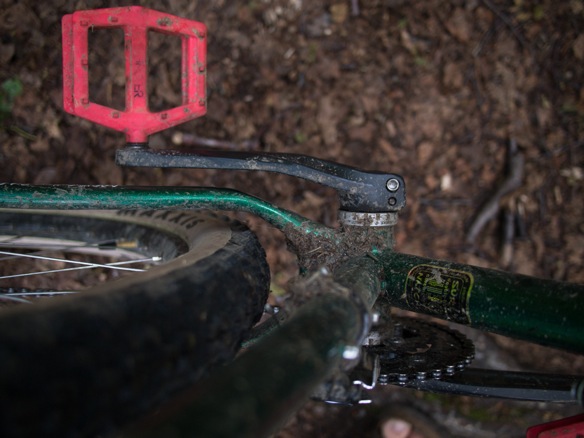
Room for mud, and when the time is right, 29×3.0″ tires. Dirt Wizards?

Finally, this fork is a dream. It feels great. I can adjust the travel from 120mm to 90mm on the fly. The C-T-D compression settings are useful when alternating between climbing and descending, and for a controlled trail setting. The fork technically clears a 29×3.0″ Knard, barely.


RockShox Reba SL, recently converted from 80mm to 120mm
Answer 20/20 720mm carbon handlebar (20mm rise/20deg sweep)/ Specialized 50mm stem/ Velo Orange headset/ Ergon GP-1 grips/ King Cage top-cap bottle cage mount/ Specialized bottle cage
Syntace P6 Hi-Flex carbon seatpost (not pictured)/ Cannondale Hooligan saddle/ Salsa seatpost clamp
Race Face Ride 32/22 cranks with bash guard/ XT 8sp GS-cage rear derailleur/ 11-32T cassette/ Shimano XT front derailleur/ SRAM PC-830 chain/ VP-001 pedals
Suntour XC Pro shifters
Avid BB-7 brakes/ Avid FR-5 brake levers
Hope Pro 2 Evo hub/ Light Bicycle 35mm carbon rim, DT butted spokes and alloy nipples/ Specilaized S-Works 29×2.3″ Renegade tires/ Stan’s tape and sealant
SRAM X7 rear hub/ Stan’s FlowEX rim/ DT butted spokes and brass nipples/ Specialized S-Works 29×2.3″ Renegade tires/ Stan’s tape and sealant
Revelate Viscacha seatpack/ Revelate framebag
Notes: Tires, worn drivetrain parts, and broken saddle will change. Luggage yet to be determined. Rides good; she won a race the other day. Not bad for a touring bike.




